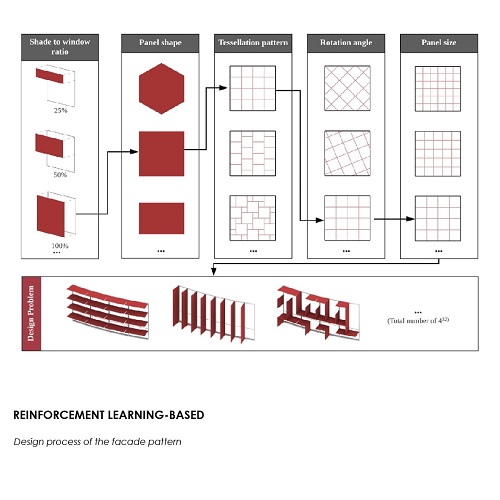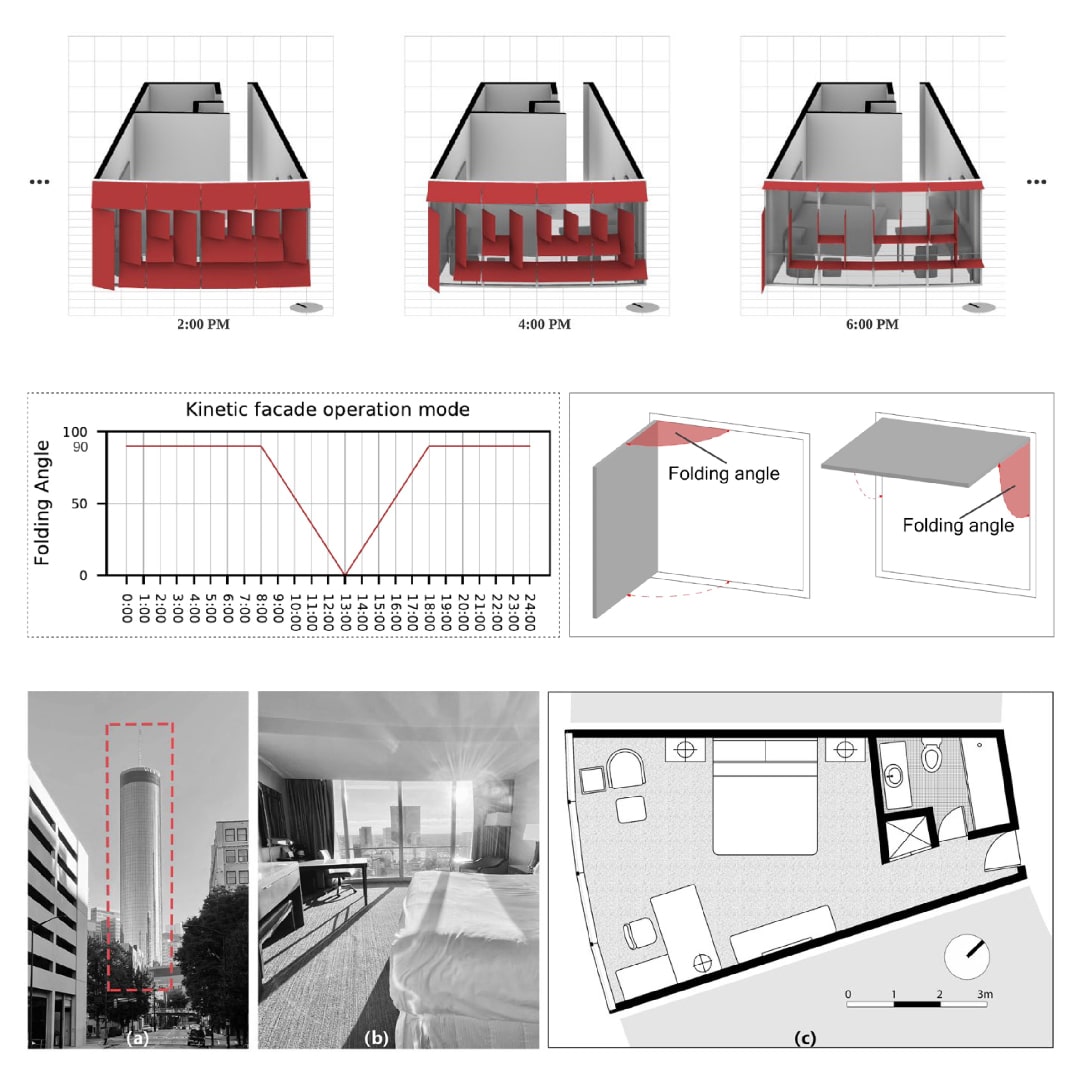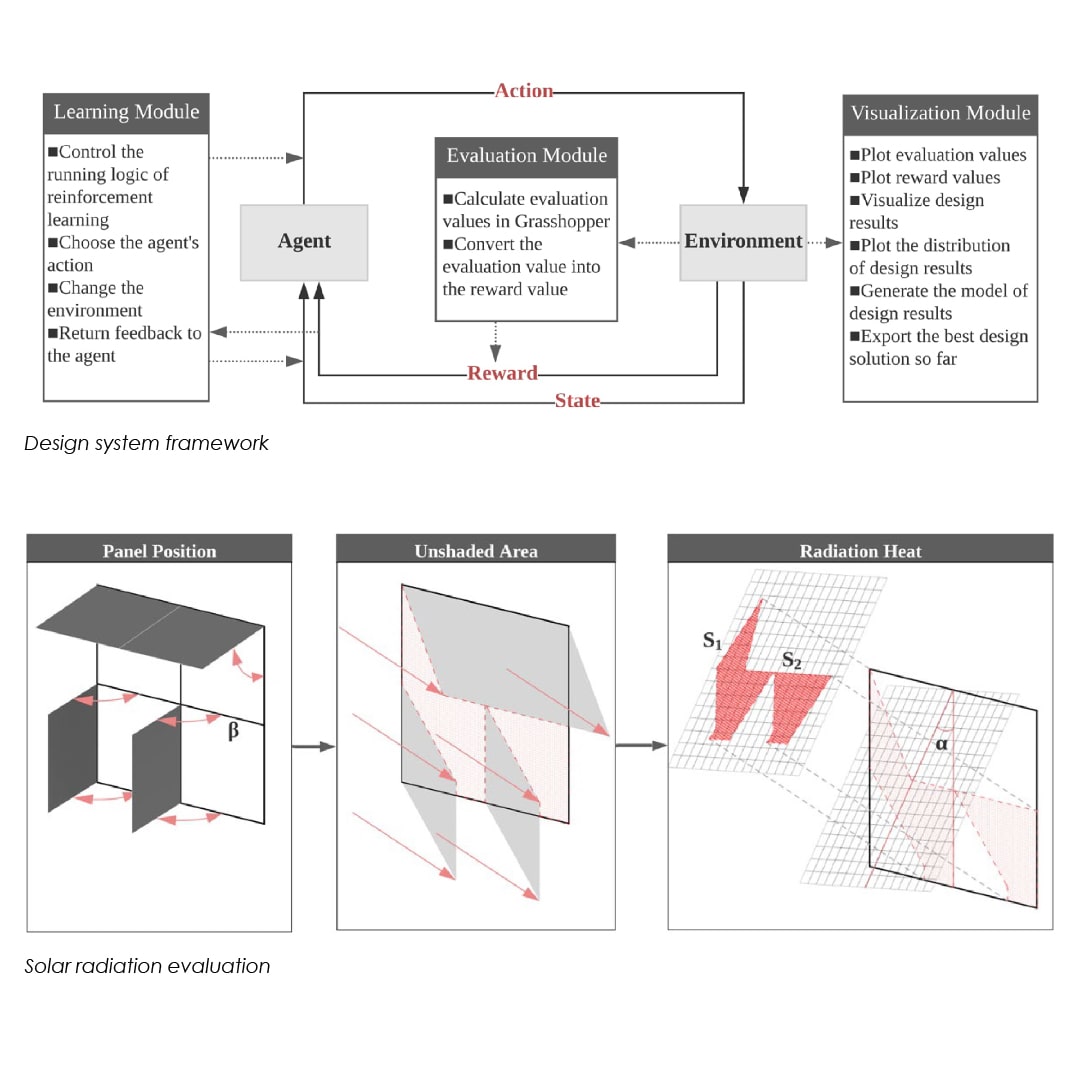
String Art Generator
String Art Generator by Yiran is a grasshopper plugin which generates a string art sequence based on an input image. You can

REINFORCEMENT LEARNING-BASED GENERATIVE DESIGN METHODOLOGY FOR KINETIC FAÇADE
This paper presents a reinforcement learning (RL) based design method for kinetic facades to optimize the movement direction of shading panels. Included with this research is a case study on the Westin Peachtree Plaza in Atlanta, USA to examine the effectiveness of the proposed design method in a real-life context.
Optimization of building performance has been given increased attention due to the significant impact buildings have on energy consumption and carbon emissions. Further, building performance is closely related to the “Sustainable Cities and Communities” mentioned in SDG11.
Results show that the novel design method improved the building performance by reducing solar radiation and glare and illustrate the potential of RL in tackling complex design problems in the architectural field.
 With the increasing demand for building energy performance and occupant comfort, kinetic facades (building facades with kinetic elements) have attracted increased interest in recent years due to its ability to adapt to the external environment by actively changing itself.
With the increasing demand for building energy performance and occupant comfort, kinetic facades (building facades with kinetic elements) have attracted increased interest in recent years due to its ability to adapt to the external environment by actively changing itself.
For instance, Al Bahr Tower in Abu Dhabi has a kinetic facade system that reduces 50% energy consumption for office spaces and 20% for the whole building (Karanouh and Kerber, 2015).
 Many studies show that an optimized control system can improve the performance of kinetic facades (Loonen et al., 2013; Zhang et al., 2018; Smith and Lasch, 2016).
Many studies show that an optimized control system can improve the performance of kinetic facades (Loonen et al., 2013; Zhang et al., 2018; Smith and Lasch, 2016).
However, expensive sensors and actuators in control systems significantly increase the facade cost (Attia et al., 2018). Improving the performance of kinetic facades through generative design creates higher requirements for the design method (Hosseini et al., 2019; Mahmoud and Elghazi, 2016).
The rapid development of artificial intelligence provides a new possibility for optimizing kinetic facades. In the last 20 years, machine learning achieved considerable growth as a result of the rapid increase of computing power and the availability of large data sets (Russell and Norvig, 2016).
Based on a reinforcement learning (RL) algorithm in machine learning, this paper presents a generative design method for kinetic facades.
 Machine learning algorithms have multiple classes of learning: Supervised, Unsupervised, Semi-supervised, and Reinforced. The machine learning algorithm used in this study is RL.
Machine learning algorithms have multiple classes of learning: Supervised, Unsupervised, Semi-supervised, and Reinforced. The machine learning algorithm used in this study is RL.
Compared with other algorithms, RL increases the efficiency of solving complex design problems with no training set and model-free algorithms.

String Art Generator by Yiran is a grasshopper plugin which generates a string art sequence based on an input image. You can

This paper by Alessandro Liuti, Sofia Colabella, and Alberto Pugnale, presents the construction of Airshell, a small timber gridshell prototype erected by employing a pneumatic formwork.

In this paper by Gregory Charles Quinn, Chris J K Williams, and Christoph Gengnagel, a detailed comparison is carried out between established as well as novel erection methods for strained grid shells by means of FE simulations and a 3D-scanned scaled physical model in order to evaluate key performance criteria such as bending stresses during erection and the distance between shell nodes and their spatial target geometry.

In this paper by Frederic Tayeb, Olivier Baverel, Jean-François Caron, Lionel du Peloux, ductility aspects of a light-weight composite gridshell are developed.
Parametric Ideas for Architects @2025